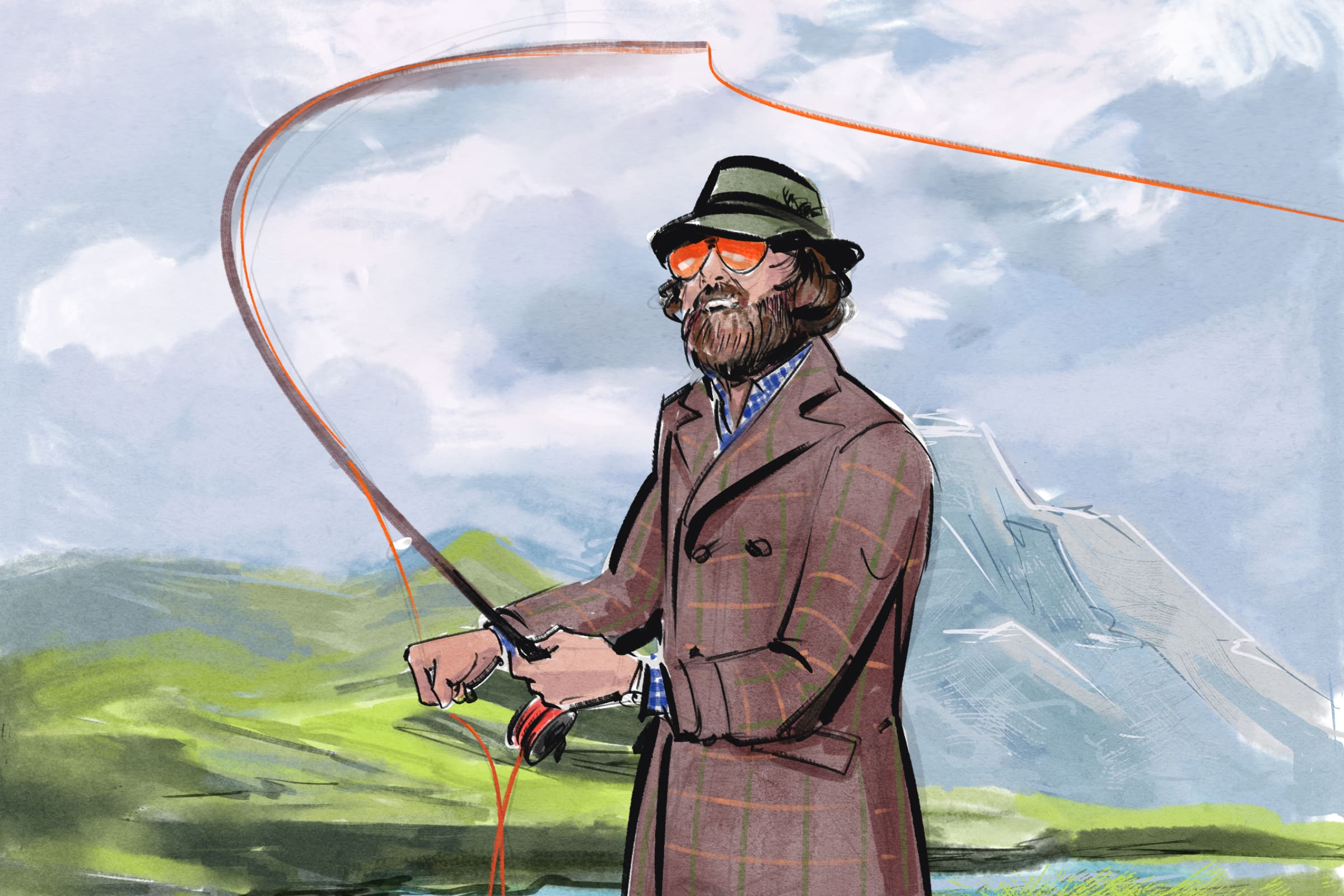Summer is a celebration, this year more than ever. It’s a season that unfolds outside, in backyards and national parks, on lakes and hiking trails. The first challenge is deciding where to go. The second challenge is staying stylish in a world full of tech fabrics.
Between you and me, most modern outdoor clothing is over-designed, too brightly colored and not very handsome. There are so many zippers and toggles that you start to look like an expedition backpack. But wait, you say — this is an issue of function over form! Well, our job is to come up with elegant solutions that do their duty tastefully. After all, we don’t want you looking as if you belong on a lunar module.
Now, I look forward to fly-fishing, from Montana to Maine. It’s good to be discreet while paying homage to the storied history of the sport, which was popularized by Englishmen donning tweed and tattersall. As an angler, I’ve given a lot of thought (no doubt too much!) to outdoor clothes that maintain their dignity. Trout are very judgmental, after all. This leads me to eBay in search of an ancient Orvis field coat or an old pair of Simms wading boots. So how do we master the art of outdoor dressing? Let’s count the ways.
Naturally, we’ll need a good coat. The English have stylishly dealt with the elements for a very long time. They invented the Barbour, the universally excellent solution against anything that falls, flurries or blows. The Beaufort model is popular; I also like the Border, which is slightly longer. If it gets scratched, stained or patched, that’s even better.
Dressing for the outdoors leads me to wear colors that appear outdoors: greens, browns, neutrals. All of which are perfect for a country sport coat. This doesn’t need to be tailored or overly formal; it can be cotton or even canvas. If it’s linen, it doesn’t matter if it gets good and wrinkled. Wear it well, and you’ll be rewarded.
If rain is coming down all day, then you do need to cross over to a more modern fabric, like Patagonia’s simple and effective Torrentshell jacket. It has kept me dry on the water from Canada to the Bahamas to Patagonia itself. It’s incredibly lightweight and packs down to fit in your bag. Dark blue should get the job done.
A gingham shirt with a nice check pattern is perfect for the country — say dark green. I personally prefer smaller checks; if they’re too large, you look a little bit like a tablecloth. Sid Mashburn makes some good options. You probably also want a chambray shirt that will only look better with every wash.
Layering is part of the outdoor equation, so what about a chore jacket from Vetra? The French company has been making them for almost a century. A vivid blue will look great if you’re going to be by the water. Wear it over a sweater, and you’re in enlightened and tasteful shape. Polo Ralph Lauren makes a nice cable-knit cashmere sweater season after season, in familiar hues (sage or hunter green) or slightly more daring pastels (Easter egg green or pale yellow).
Now, the challenge with all these clothes is that you can’t be afraid of a little precipitation. If you’re outside, you have to embrace uncertainty and even rain. So your beloved suede loafers stay in the closet. Out come the Blundstones, the Australian pull-on boot (a wider version of the Chelsea) that’s happy to take on whatever comes at it. This shows you’re a man who adapts to the conditions — a good quality to have. If you want something lighter, try a pair of boat shoes from Sperry’s Cloud collection. Or you can opt for L.L.Bean boots; these classics are still made in Maine and can handle water if you’re getting into puddles and the like. The camp moc, meanwhile, is a low-cut slip-on that’s just rugged enough.
Now this leaves us with a hat. People often ask me about hats: where to get them, how to wear them, whether they can get away with them. This is an important sartorial issue; we’re talking about your head here. You don’t want your hat to look too new. I used to put a straw hat under water for a while, which gave it a more lived-in look. Or don it in a rainstorm. Don’t be shy! For a hat to work, you have to commit to it. Once you start wearing it, keep wearing it and make it yours. If there’s an old cotton bucket hat with a striped band at the cabin that your grandfather wore, that’s a great place to start.
This summer will be even more welcome than most. When we head back out into the natural world, let’s show our enthusiasm in style.
A Minnesotan turned New Yorker, David Coggins writes a style column for Artful Living. His latest book, The Optimist: A Case for the Fly Fishing Life, is out now.



